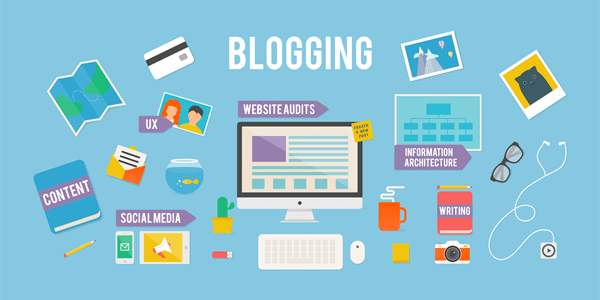One of the most challenging aspects of running a WordPress business is breaking out of the feast or famine cycle that so many of us are a victim too. Doesn’t it always seem that you either have too much work or not enough?
If you find yourself wishing there was a more consistent way to attract and convert new leads, this post is for you. We’re going to discuss the basics of developing a sales funnel for your WordPress business.
The objective is to help you create a sales funnel that makes the process of converting your website visitors to prospects, leads and clients easier, more consistent and less stressful.
The Problem With Your Current Sales Funnel
Most of the time, when it comes to a small WordPress business, there are two common problems with sales funnels. The first is not having a sales funnel at all. An easy enough problem to fix, right? If that sounds like your business, you can probably jump right to the next section where we’ll discuss how to start building your funnel.
The second, and possibly even more common problem is having a sales funnel that assumes every visitor to your website is ready to hire you or your agency – today. These “funnels” are usually made up of a single contact form that says “Call Us To Discuss Your Project” or something similar. You might even have an opt-in form with a simple lead magnet. But that’s where the funnel begins and ends. If you’re able to capture their email address, what happens next?
Unfortunately, these “one size fits all” sales funnels don’t really work. Most visitors to your website aren’t ready to hire you – yet. But that doesn’t mean they’re a lost cause. Quite the opposite in fact.
Once you build a proper funnel, you’ll start to see an increasing number of visitors who are willing to move through the different stages of your sales process. You’ll begin generating more qualified leads and landing clients with greater ease. Over time, as you have more prospects enter your funnel, the sales process will produce qualified leads more consistently.
Building Your Sales Funnel
Taking the time to build, test and refine a proper sales funnel can not only improve your conversion rate, but it can also make it easier to find and attract leads that are actually interested in the services you offer. It doesn’t matter whether you’re a developer, designer or you’re selling custom Divi templates. Your business stands to benefit from well-designed sales funnel.
A properly designed funnel makes your sales process easier for you and your future clients. There are 4 things we’re going to discuss in this article. The first is how to structure your content in a way that is more likely to attract new clients. The second thing we’ll look at is the 3 different parts of your sales funnel that are critical to its overall success.
The Need For Content

Blog Content Creation – article thumbnail image by mayrum / shutterstock.com
Contrary to popular belief, you don’t need to have a blog on your website. You can still create your sales funnel using a combination of landing pages, lead magnets and opt-in forms.
That said, having a blog is certainly a preferable way to begin the process of creating your sales funnel. It allows you to post regular content for visitors at every stage of the decision-making process. Whether you’re creating blog content or landing pages with email sequences, there are some general best practices that you want to pay attention to.
- Know who you are writing for. This article is directed specifically at business owners who use WordPress to earn their living. The bulk of that audience is made up of designers, developers or small agency owners who are interested in attracting more clients with less effort. Your target audience for every post or email that you write should be just as specific.
- Headlines should capture the attention of your audience. Don’t beat around the bush. Each blog headline or email subject line should tell your visitor exactly what the contents are about. It should also do it in an engaging and personable way.
- Start with a compelling first paragraph that addresses their problem or question and hints at a solution. Make sure you’re subsequent paragraphs deliver what was expected.
- Use great images to break up the content wherever possible.
- Provide social proof if it makes sense to do so. Making sense means that if you content is being shared, let people know. But if you’re content isn’t being shared very much, don’t brag about the fact that only one person has taken the time to share your post on Facebook.
- Include a relevant call to action that matches where the reader is most likely to be in their decision-making journey (this will make more sense in a minute).
With those content best practices out of the way, let take a closer look at the three primary parts of your sales funnel.
Acknowledgement Stage – “Uh Oh, I have a Problem”

Solving a Problem – image by Sentavio / shutterstock.com
When a visitor first arrives on your website, they are usually in the very early stages of the decision-making process. They know they’ve got a problem or a challenge that needs to be addressed and that’s about it. Maybe they’ve seen a drop in sales due to less website traffic but are unsure of the exact reason why. Your visitor is looking for possible answers.
The chances of this visitor picking up the phone and calling you at this stage are somewhere between slim and none. Presenting them with a contact form offering a free consultation probably won’t work.
What will work, is broad spectrum, general content that is likely to help identify or provide more information about their problem. So what does this look like? Using our previous example, you might have a series of blog posts that discuss everything from Google’s recent algorithm changes to the importance of having a website that’s mobile friendly or maybe even a post covering the top on-page SEO factors most likely to affect their rankings.
Attached to these specific blog post would be a call to action. For example, you could have an email opt-in that subscribes your visitor to a series of emails. In each of those emails, you would go into further details about the potential reasons that their website might see a sudden drop in traffic. Cover the top 4-5 reasons and create a brief email for each one.
Also included in the content of the emails you’re sending should be a link to additional content. This content is what will help the prospect to transition to the next step in the process.
Consideration Stage – “Maybe I Need to Hire Some Help?”
The next step in your funnel is designed to help your prospect move further into their decision-making process. There will be a lot of people who drop off or disappear in the first stage. These are the “do-it-yourself” people or possibly the ones who have an uncle who builds websites as a hobby. No worries, they might be back later but for now, there is no sense wasting your time and effort on them.
For those prospects who make it through the second phase, your mission becomes to answer their next round of questions. At this stage in the process, they’ve invested some time on your website and reading your emails. Chances are they’ve read your about page, examined your portfolio and read a few client testimonials as well.
The specific content you want to provide at this stage centers around how you help clients with a similar problem to theirs. Some ideas might include case studies, white papers or even videos that answer some of the specific questions, concerns or objections that previous clients have presented you or your sales team with.
As you answer objections and provide more information, some of your prospects will get to the stage where they are ready to find out more about your services. After watching a case study, they might be wondering if you can produce the same results for their website that you did for the client in the case study. Which of course, you can.
In the content that you create for this second stage, it’s time to start introducing some specific offers that might allow your prospect to request additional information directly from you. As they move closer to the final decision-making process, it’s time to start presenting offers that are more specific to their final decision. They’re ready to commit to redeveloping their website, they just need some help taking the next step.
The Decision Stage – “I’ve Found the Company I Want to Hire”
The decision stage is where you can finally turn your attention to actually landing your new client. How you approach this stage is dependent upon how you like to run your business. Maybe you provide a free website critique? Maybe you prefer to direct prospects to a sales page where they choose their desired service level and then await a follow-up call from you or your team?
Specific ideas for this stage of the process might include a landing page that offers a free critique of their current website or a free personal phone consultation. Maybe you direct them to a sales page where they select from one of three website development plans and fill out a contact form.
If your prospects have made it this far, it’s more than likely they are ready to make a commitment. They understand their problem, the potential solution, how you can help them and why your two companies might be a good fit. This is your chance to land a new client.
Wrap Up
We covered almost all of the basics involved in setting up a sales funnel for your WordPress business. If you spend a little time researching some of your competitors, you’ll probably discover that very few of them have taken the time to develop a proper funnel. If that’s the case, it leaves you with a great opportunity.
Trying to land a new client the first time they visit your website is a losing proposition. Sure, there will be a small percentage of visitors who are ready to make a decision as soon as they visit your site, but most are not.
Instead of trying to land a new client right from the first visit, respect the fact that they have a process that they need to work through first. It’s your job as a WordPress professional to answer their questions and help them work through the process.
It’s also important to remember that not every prospect will move through your sales funnel at the same pace. Some may take much longer than others. By being helpful, earning their trust and establishing yourself as an authority, you’ll stand a much better chance of landing them as a client.
Do you currently have a sales funnel created for your WordPress business? How has the funnel made an impact of your sales process?
Article thumbnail image by ADE2013 / shutterstock.com









This is very good article. Thank you so much ka Joe
Hi Joe. I put my phone number prominently on my website and offer a free one hour consultation. I find that by talking with clients over the phone I’m able to convert about 60% of the ones that call. It can suck up my time but I still get to help people if they don’t hire me and I’ve landed some great clients because of it.
This is sound like Give to Get more. Thank you for sharing.
But the question remains. How do you get people to your site to consume your content and get them in the funnel.
Just because you build it doesn’t mean they’ll come.
Good question Brian, however I think that’s another topic: traffic. I think this article might help http://www.elegantthemes.com/blog/tips-tricks/creative-ways-to-drive-more-traffic-to-your-website
I agree with Brian. Although the article is really great, I was expecting to reach to the answer to that question.
Amazing, noticeable points to give a push to the business.
Thanks. Very timely for me. I’m just trying to establish a sales funnel for my counseling business. You really articulated some dilemmas I’m facing. Thanks!
Joe, this was a well put together post. Thank You! I hope I have your permission to share this with my clients? In-fact I teach my clients just how important it is to have a “Sales Funnel” for their business and how utilizing their WordPress CMS is a great place to start. Thank you Elegant Themes for the amazing content, post and themes. Nick your company work ethic is one I hope to model my own after someday.